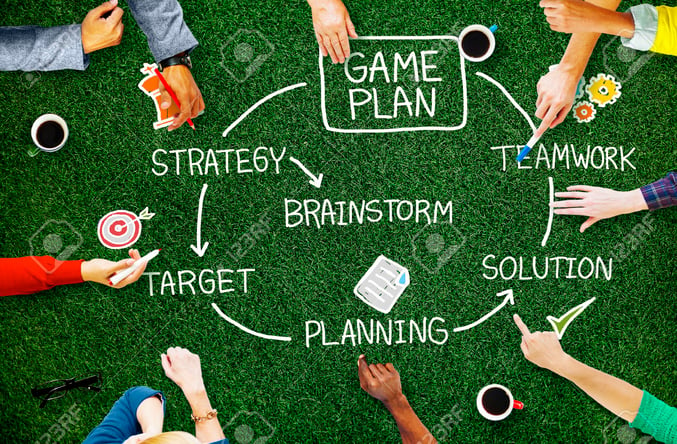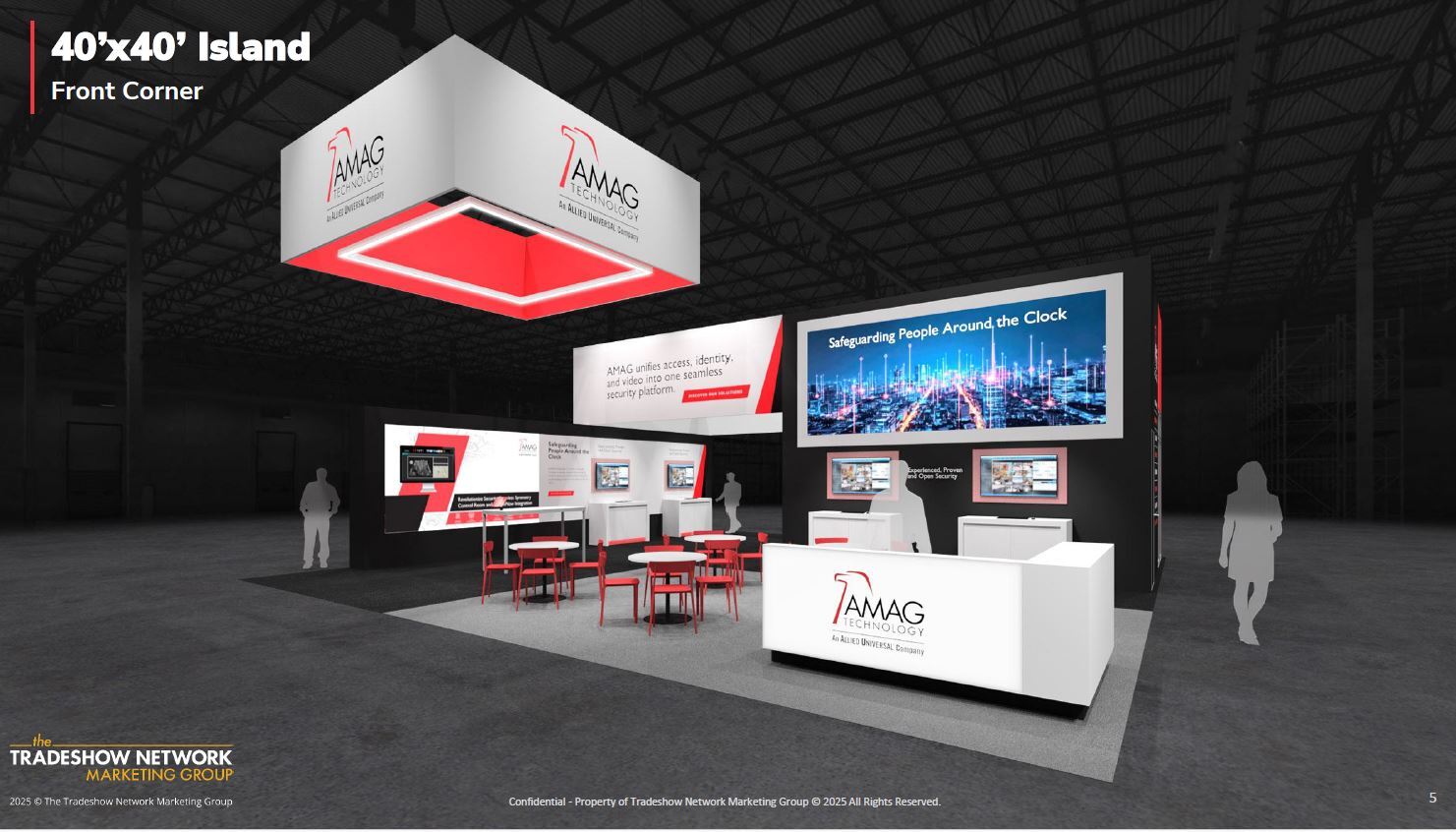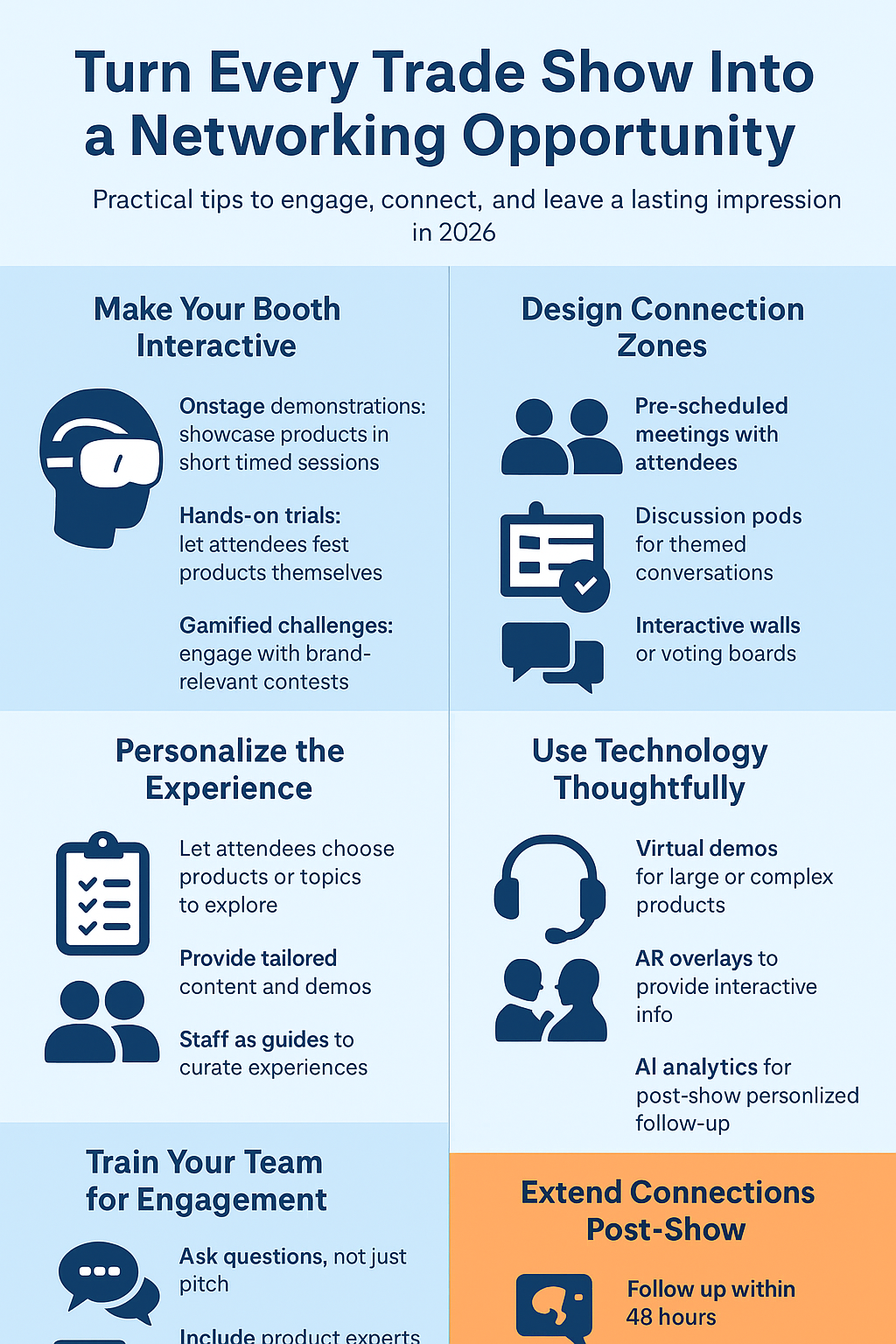Why does strategic planning seem to be last on the to-do list for trade shows? Of course, planning for all the details involved in an exhibit is a given. But it is all too easy to fall into the trap of showing up at an event, hoping for the best. Based on sheer number of attendees, you will probably get a few leads. However, going to a show without strategic objectives in mind is not the best use of your marketing dollars and sales staff.

What are the components of a successful event strategy?
Business Objectives
It all starts with the overall business objectives of your company. While working from your basic business objectives may seem obvious, the fundamentals can be overlooked. How can this event promote your overall company objectives, sales revenues, brand personality, products and services, and target markets?
For example, you may be introducing your products to a new industry in a new event. In that case, your event strategy needs to include educating the market about both your company and your products. By focusing on the business objectives, you can create an event strategy to meet those objectives while promoting the identity of your company and targeting the right audience. Take the time to research and analyze these components before putting an event plan in place, or hire someone to help you.
Marketing Strategy
The next component is fitting the event into your overall marketing strategy. The key is to make sure that each component of your marketing plan is working with your event strategy. When you are preparing for an event, post it on your website, advertise it through industry publications and social media, and promote it through public relations. The worst feeling is to attend an event where your customers did not even know to look for you! Trade show events should help you both reach new prospects and reinforce your existing customer relationships. Take advantage of all your marketing efforts to promote your trade show event activities.
Event Strategy
Once you have focused on specific business objectives and overall marketing objectives, you can create an effective event strategy specific to a trade show event. The same strategy cannot be used for every event, because every event is unique.
In creating an event strategy, identify the following elements.
Show objectives: What results do you want to achieve from the show? Perhaps you are looking for opportunities to actually sell your product on site and need to set a sales quota. If you have a long sales cycle, your objective may be to set appointments with 10 key prospects. Your objectives must be something that you can measure after the event.
Target audience: What segment of attendees might buy your product or service? What are they specifically looking for that your company can provide? How can you best reach your exact target?
Brand messages: What major messages do you want to communicate that will be remembered after the show? How can your exhibit and all your collateral materials work together to communicate those messages?
The best event strategy involves planning for before, during and after the show.
Pre-show marketing: How will you communicate that you are attending the show before the event? Will you send an invitation to key prospects or advertise in the show catalog?
Booth experience: What will happen when they visit your exhibit space? Do you need product demonstrations or a private conference room or both?
On-site marketing: What information will you convey at the event and how will you capture leads?
Post-show marketing: How will you follow up with clients and prospects after the event? A surprising number of exhibitors collect names but have no plan for getting in contact with those people after the event.
Evaluation
The final step is to evaluate the components of the plan and your results after the event to determine whether the event was successful. Work with the sales team to find out if the leads met their objectives and how much business they closed as a result. Document what worked and what failed and decide whether to participate in the event again based on your results.
By taking a strategic approach to every event, your bottom-line results from your trade show efforts are bound to get better. You really can plan on it.





